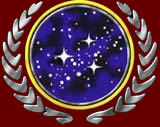|
|
|
The Navigation Department aboard any starship is to be responsible primarily for the effective helmsmanship of the starship in question. Consequently, officers within this department are as essential to the ship as any other department - the engineers control power and maintain systems, the command crew make the final decisions, the pilots ensure the ship go where the Captain directs the ship to go. In essence, they serve as the intermediaries between the Captain and First Officer (or whichever member of the command team happens to be present on the Bridge at the time) and the ship itself.
However, while it is true to say that piloting serves as the primary function of the Navigation department, it is by no means the only function of officers within the department. The on-duty navigation officer on the bridge also acts as a liason between Engineering and the command staff when an engineer is not directly on station on the Bridge, and is also responsible for co-ordinating sensory information with the Operations department in order to relay the appropriate information to the ranking officer on the Bridge. In addition, they must also be fully briefed in the mechanics of starship separation (where applicable), since it is their job to initiate and complete the separation - unsuccessful maneuver during seperation can lead to damage or complete destruction of both sections (saucer and drive). All navigation officers are also qualified pilots for smaller craft, and thus are capable of piloting shuttles and runabouts, and with the addition of tactical training, fighter craft of Starfleet designs. They are also given tactical pilot training in order to help them co-ordinate various starship combat maneuvers and evasive patterns to assist the Tactical department lay down the most effective firing patterns.
The three primary systems under the control of the Navigation officer are the Warp Engines, designed for faster-than-light travel, the Impulse Engines, designed for fast sublight travel, and Maneuvering Thrusters, designed for minor course corrections and orbital realignment. All of these systems are hooked into the sensor systems in order to allow the Navigation officer to monitor their status directly - hence why they also serve as liasons between the Bridge and Engineering, since they have the most direct access to engine status aside from the Engineering Department. Since they are also responsible for course and heading, the Navigation console possesses panels designed to provide information on ship velocity, axial orientation, co-ordinates and a direct access to the astrophysical library of the ship's computer in order to allow faster computation of an appropriate course.
Additionally, navigation officers are also responsible for remaining on station on the battle bridge of any starship with saucer-separation capabilities in the event that the ship requires a separation at any time, whether during battle or as a result of the possibility of a warp core breach etc. Consequently, at least one officer from the department can be found on the battle bridge at all times, with shift rotation occuring between all officers within the department in order to ensure that all of them are familiar with separation procedures and the differences of piloting the drive section without the saucer section in the event of an emergency.
|
|
| |
|
|
Chief Flight Control

Former Chief Flight Control
Lieutenant Jeremy Savoie
Miramon Terrik
|
The Chief Navigation Officer is the head of the Navigation department and is responsible for co-ordinating the efforts of their department at any one time - duty rosters and assignments, and serves as a member of the senior staff aboard ship. They are also required to arrange maintenance of all support craft aboard the ship within the care of their department - hence, they have to constantly co-ordinate with Engineering staff to ensure that all shuttles and runabouts are in a condition conforming to Starfleet standards. Any fighter craft aboard ship are, however, the responsibility of their squadron leaders with regards to maintenance. Additionally, the CNO is also responsible for ensuring that all staff under their supervision maintain up-to-date piloting licenses, and therefore must see to it that all pilots aboard ship that report to them log the required number of flight hours per week to retain their licenses. |
 Raven Darkstar
Raven Darkstar |
|
|
|
The most common position within the Navigation Department, the majority of officers within Navigation maintain this position, since these are the individuals responsible for directing the course and heading of the starship at all times. They also man the battle bridge's CONN station and are able to fill the role of shuttle/runabout pilot when required by the particular demands of a mission. Many of them also have training in operations, engineering or tactical in order to effectively complement their roles aboard ship, since such things assist with their ability to co-ordinate between the departments aboard ship.
|
|
|
|
Shuttle Pilot |
These particular officers are exclusively responsible for piloting shuttles and runabouts, and consequently are not necessarily required to possess qualifications in full starship piloting (hence why non-commissioned officers can often be found holding these positions). Their responsibilities when aboard ship are to maintain the shuttle systems, co-ordinating with Engineering under instructions from the CNO and CEO, as well as keeping the shuttles up to standard through taking them out in piloting runs (atmospheric and orbital) as well as running the smaller craft through combat maneuvers should any of them come under fire in a combat situation. They report directly to the CNO and Flight Deck Operations Officer.
|
|
|
|
|
Course Settings
The ship's direction and heading is determined by computation of two variables: the relative and absolute bearing of the ship. The relative bearing is the distance and position of something in space relative to the ship's current position and orientation, and is determined via the two variables of travel - elevation and azimuth. These are co-ordinated using a system whereby 000-mark-000 is a point straight ahead from the ship - the ship is directed exactly forward and on a flat plane. Consequently, anything directly in the path of the ship's forward sections would be on a relative bearing of 000-mark-000. As an object moves away from the forward point (on either axis), the relative bearing alters accordingly: the first set of numbers being the bearing (azimuth) and the second being the mark (elevation). The absolute bearing of the ship is the location of the ship in relation to the galactic centre: 000-mark-000 is the centre of the galaxy, and the ship's course is determined by the distance, direction and elevation of the ship in relation to the centre - hence, the course is determined by distance, the elevation of the ship relative to the core (Y axis) and the orientation of the ship on it's azimuth (X axis).
This system is used both by Navigation and Tactical departments - only the absolute bearing is used by Navigation, since this determines the course and direction of the ship at any one time (since regardless of orientation or elevation, the ship's relative bearing is always 000-mark-000), with the relative bearing being used by Tactical to ascertain the distance, elevation and orientation of nearby objects (the ship maintaining a bearing of 000-mark-000, any objects in the vicinity has a bearing relative to the position of the ship).
In order to direct the ship towards a specific destination, the navigation officer can utilise one of five systems: using relative and absolute bearings, inputting the destination planet or system, the sector of the arrival point (in accordance with stellar cartographical standards) and also towards any object or body located on the sensors through a direct intercept.
|
|
|
| |
|


